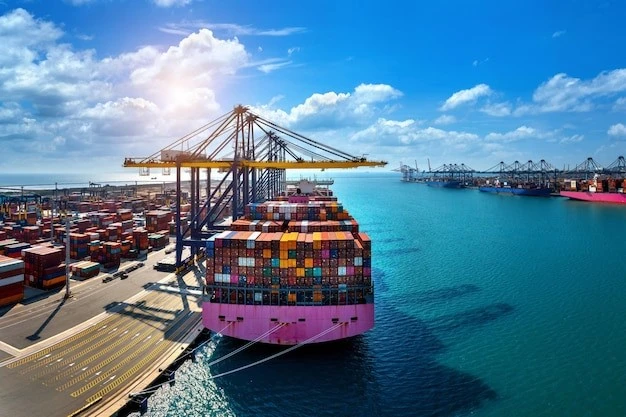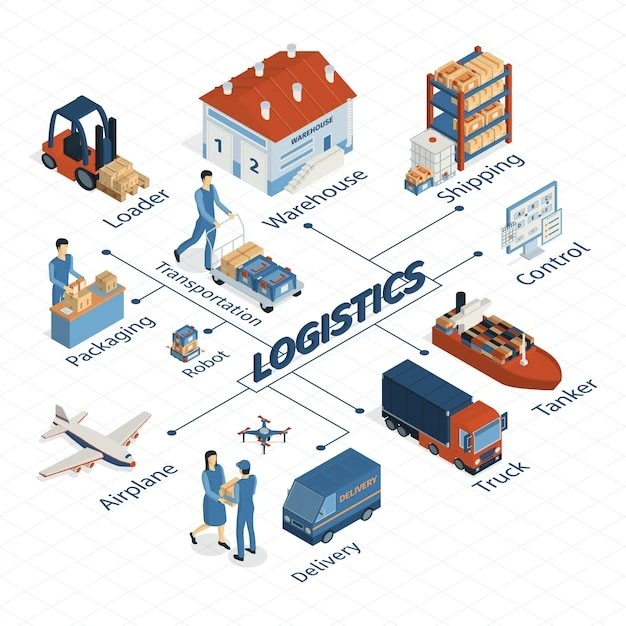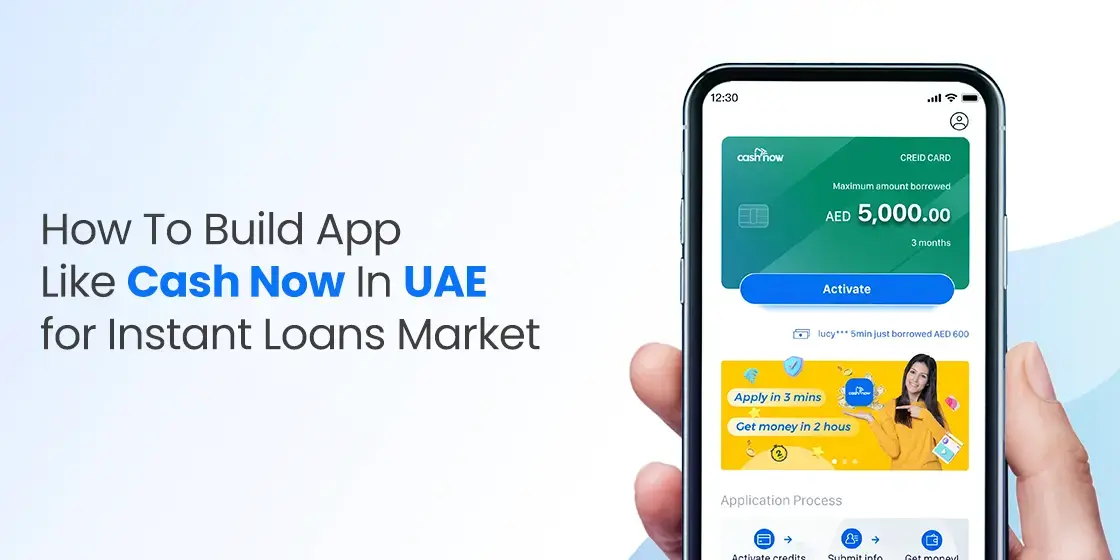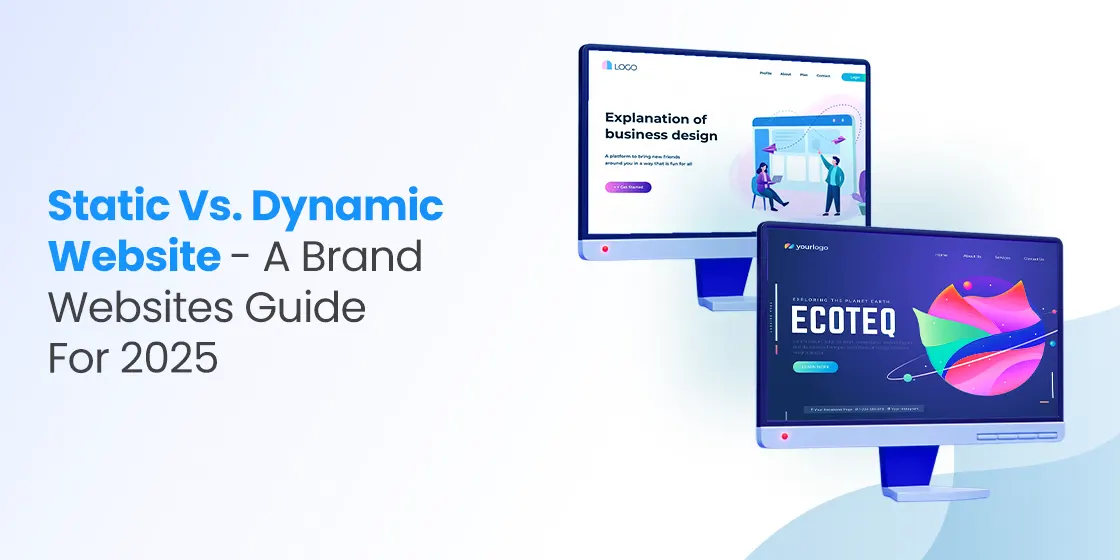Table of Content
Discover How to Develop a Logistics App Successfully in 2025
Considering global commerce today, efficient and streamlined logistics operations are no longer a competitive advantage but a fundamental necessity for businesses. The increasing complexity of supply chains, coupled with the growing demands of consumers for faster and more transparent delivery services, has increased the demand for innovative technological solutions. And at the forefront of this drive are logistics apps, tools that empower businesses to optimize their transportation, warehousing, inventory management, and overall supply chain processes.
For developers at logistics startups, knowing hoe to develop a logistics app that is commercially viable and addresses critical industry needs is important. However, developing a successful logistics app in 2025 demands a strategic approach, extending far beyond basic mobile app development principles. It requires a deep dive into supply chain management, the needs of various stakeholders like drivers, dispatchers, warehouse staff, and end customers, and the integration of complex data technologies.
Discover how to navigate the complexities of logistics app development these days, based on tips and processes used by successful mobile app development services. Let’s begin.
What is a Logistics App – A Brief Overview

A logistics app is a mobile software application designed to optimize and manage various aspects of the supply chain and transportation processes. These apps serve as critical tools for businesses involved in the movement of goods, providing functionalities that enhance efficiency, visibility, and communication across the entire logistics ecosystem. Unlike general-purpose business applications, logistics apps are specifically tailored to address the unique challenges and requirements of managing complex supply chains, from the initial sourcing of raw materials to the final delivery of finished products to consumers.
The core purpose of a logistics app is to streamline operations, reduce costs, and improve the overall efficiency of the movement and storage of goods. This is achieved by providing real-time data, automation of manual processes, and enhanced communication capabilities. For instance, a logistics app might enable dispatchers to efficiently assign delivery routes to drivers, track the real-time location of vehicles, and communicate updates or changes on the go.
Drivers, on the other hand, can use these apps to access route information, manage delivery confirmations, and report any issues encountered during transit. Warehouse staff can utilize logistics apps for inventory management, tracking the movement of goods within the warehouse, and optimizing storage space.
Ultimately, a well-developed logistics app acts as a central hub for managing and coordinating various stakeholders and activities within the supply chain. It provides a digital platform for accessing critical information, making informed decisions, and responding proactively to potential disruptions. So, its more than just location-based app development.
Logistics apps empower businesses to gain greater control over their operations, improve transparency for all stakeholders, and ultimately deliver better service to their customers. The specific features and functionalities of a logistics app can vary significantly depending on the specific needs of the business and the type of logistics operations it supports.
Different Types of Logistics Apps

The field of logistics is vast and encompasses a wide array of activities, from the best online shopping apps in the UAE to global delivery giants like FedEx. Consequently, logistics apps are not giant, single-purpose entities but rather specialized tools designed to address specific needs within the supply chain. Understanding the different types of logistics apps is crucial for developers to identify target markets and tailor their solutions effectively.
- Transportation Management Apps: These are perhaps the most common type of logistics apps, focusing on the efficient movement of goods from one point to another. These apps are essential for trucking companies, delivery services, and any business with its own fleet of vehicles. Advanced features might include predictive analytics for potential delays and integration with telematics systems for vehicle diagnostics and driver behavior monitoring.
- Warehouse Management Apps: Warehouse management apps are designed to optimize operations within warehouses and distribution centers. These apps are critical for businesses with significant warehousing operations, helping to reduce errors, improve efficiency, and optimize space utilization. Future trends include integration with automated guided vehicles (AGVs) and warehouse robotics.
- Fleet Management Apps: While overlapping with transportation management, fleet management apps often have a broader scope, focusing on the overall management and maintenance of a fleet of vehicles. These apps are vital for businesses that own and operate a fleet of vehicles, helping to reduce operational costs and improve fleet uptime. Integration with predictive maintenance systems is an emerging area.
- Supply Chain Apps: These apps aim to provide end-to-end visibility across the entire supply chain, from the sourcing of raw materials to the final delivery to the customer. They often integrate data from various sources, including transportation management systems, warehouse management systems, and enterprise resource planning (ERP) systems, to provide a holistic view of the flow of goods. These apps are increasingly important for businesses with complex and geographically dispersed supply chains.
- Last-Mile Delivery Apps: Focusing specifically on the final leg of the delivery process to the end customer, these apps often include features such as route optimization for last-mile deliveries, real-time tracking of delivery drivers, customer communication tools (providing delivery updates and estimated times of arrival), electronic proof of delivery (capturing signatures or photos), and integration with e-commerce platforms. These apps are crucial for businesses involved in direct-to-consumer delivery.
How to Develop a Logistics App in 2025 – A Guide

Developing a successful logistics app in 2025 requires a structured and strategic approach, encompassing several key phases, including a look at the emerging tech trends in the UAE, US, and especially China.
Define Your Core Objectives and USP
The initial phase of logistics app development involves a deep understanding of the specific problems you aim to solve and the unique value proposition your app will offer. This requires thorough market research, identification of target users, and a clear articulation of your app’s core objectives.
- Conduct Comprehensive Market Research: Begin by analyzing the existing logistics app landscape. Identify the strengths and weaknesses of current solutions, pinpoint unmet needs, and understand the pain points of potential users This will help you identify opportunities for innovation.
- Identify Your Target Users and Their Specific Needs: Logistics involves a diverse range of stakeholders. Clearly define your primary target users, and tailor your app’s features and user experience to the specific needs of your target audience is crucial for adoption and success.
- Identify Your Unique Selling Proposition (USP): What will make your logistics app stand out from the competition? Define your app’s unique value proposition. Consider factors like cost-effectiveness, specialized features, or a unique approach to solving a specific logistics challenge.
Building Your Technological Infrastructure
A robust and scalable technological infrastructure is the foundation of a successful logistics app. This involves careful consideration of the technology stack, data management strategies, and integration capabilities.
- Select the Appropriate Technology Stack: Choose the programming languages, frameworks, and development tools that best align with your app’s requirements, performance expectations, and development team’s expertise. Consider factors like scalability, security, maintainability, and cross-platform compatibility if applicable.
- Develop a Robust Data Management Strategy: Logistics apps handle vast amounts of real-time and historical data, including location data, sensor readings, delivery statuses, and inventory levels. Design a robust data architecture with storage solutions that can handle large volumes of data. Implement appropriate data encryption and access control to protect sensitive information, and plan for data backup and recovery.
- Plan for Seamless Integration with Existing Systems: Logistics operations rely on a various systems, such as Transportation Management Systems, Warehouse Management Systems, ERP systems, and more. Your app should integrate with these systems via APIs to ensure a unified view of logistics operations. Thoroughly research the APIs of the systems your users are likely to use.
Planning Your User Experience Design
In the high-pressure environment of logistics, a user-friendly and intuitive interface is important for app adoption and effectiveness. The UX design should prioritize efficiency, clarity, and ease of use for all types of users.
- Focus on User-Centric Design Principles: Focus on understanding the workflows and needs of your target users throughout the design process. Conduct user research to identify their pain points and design interfaces that align with their needs. Consider the different contexts in which the app will be used (e.g., drivers on the road, warehouse staff on the floor) and design accordingly.
- Prioritize Real-Time Information and Visibility: Logistics professionals rely heavily on real-time data. Your app’s design should prioritize the clear and timely display of critical information, such as vehicle locations on a map, delivery statuses, inventory levels, and potential delays. Ensure that data is presented in a format that is easily understandable and actionable.
- Optimize for Mobile Use and Varying Network Conditions: Logistics apps are often used on the go, often with unreliable network connectivity. Design your app to be responsive with offline capabilities where appropriate, allowing users to access critical information or functions even without an internet connection.
Incorporating Data Analytics Functionality
Leveraging the vast amounts of data generated by logistics operations can provide valuable insights for optimization and decision-making. Integrating data analytics functionality into your app is crucial for providing added value to users.
- Real-Time Performance Monitoring and Dashboards: Implement customizable dashboards that provide users with a real-time overview of KPIs, such as delivery times, fuel consumption, vehicle utilization, and warehouse efficiency.
- Historical Data Analysis and Reporting: Enable users to analyze historical data to identify trends, bottlenecks, and areas for improvement. Allow for data export and integration with other business intelligence tools.
- Predictive Analytics and Forecasting: Explore opportunities to incorporate predictive analytics capabilities. This can provide users with proactive insights for better planning and decision-making.
- Data Visualization: Present data in a clear and visually appealing manner using charts, graphs, and maps. Effective data visualization can make it easier for users to understand complex information and identify key insights quickly.
Conclusion
Knowing how to develop a logistics app successfully today requires a deep understanding of the logistics industry, its technology and design, and a commitment to innovation. By defining clear objectives, building a solid infrastructure, focusing on user experience, and leveraging data analytics, developers can create solutions that address the needs of this sector.
Staying ahead of emerging trends and future technologies will be crucial for creating the next generation of logistics applications that drive efficient, transparent, and sustainable operations across the global supply chain. The opportunities for developers in this space are vast, especially in the tech startup world.

Empower your digital journey with StruqtIO - Your dedicated partner for cutting-edge custom software development, innovation, and digital transformative solutions. Harness the power of technology to elevate your business and redefine your digital landscape today.


